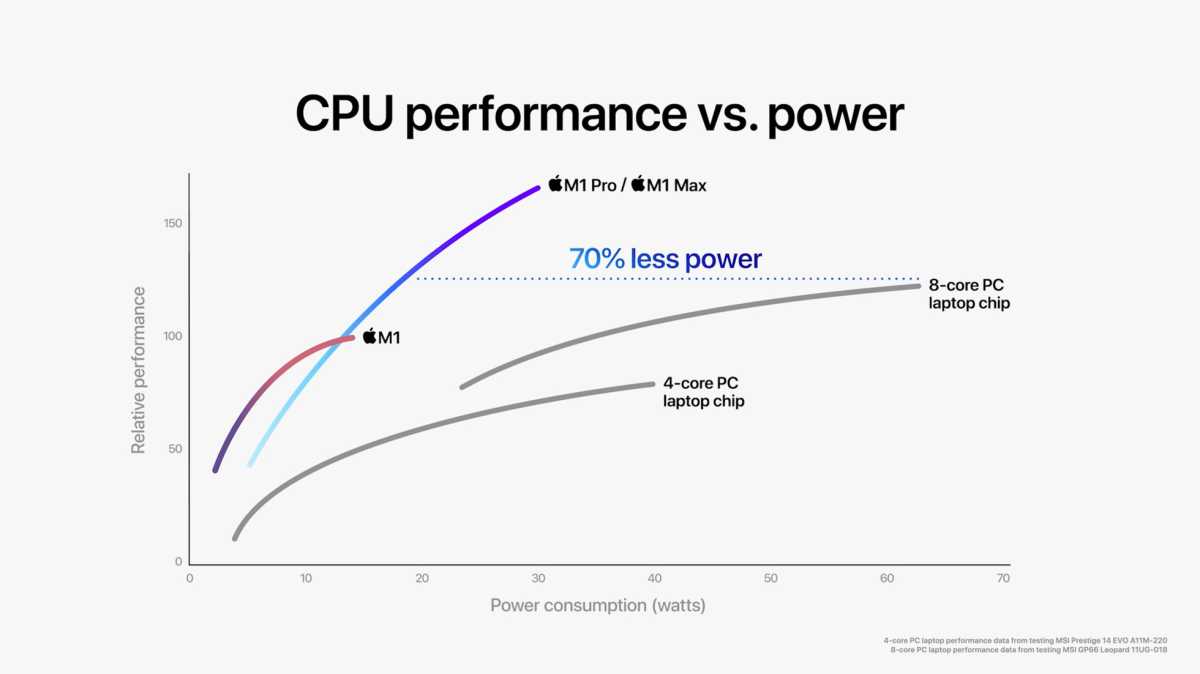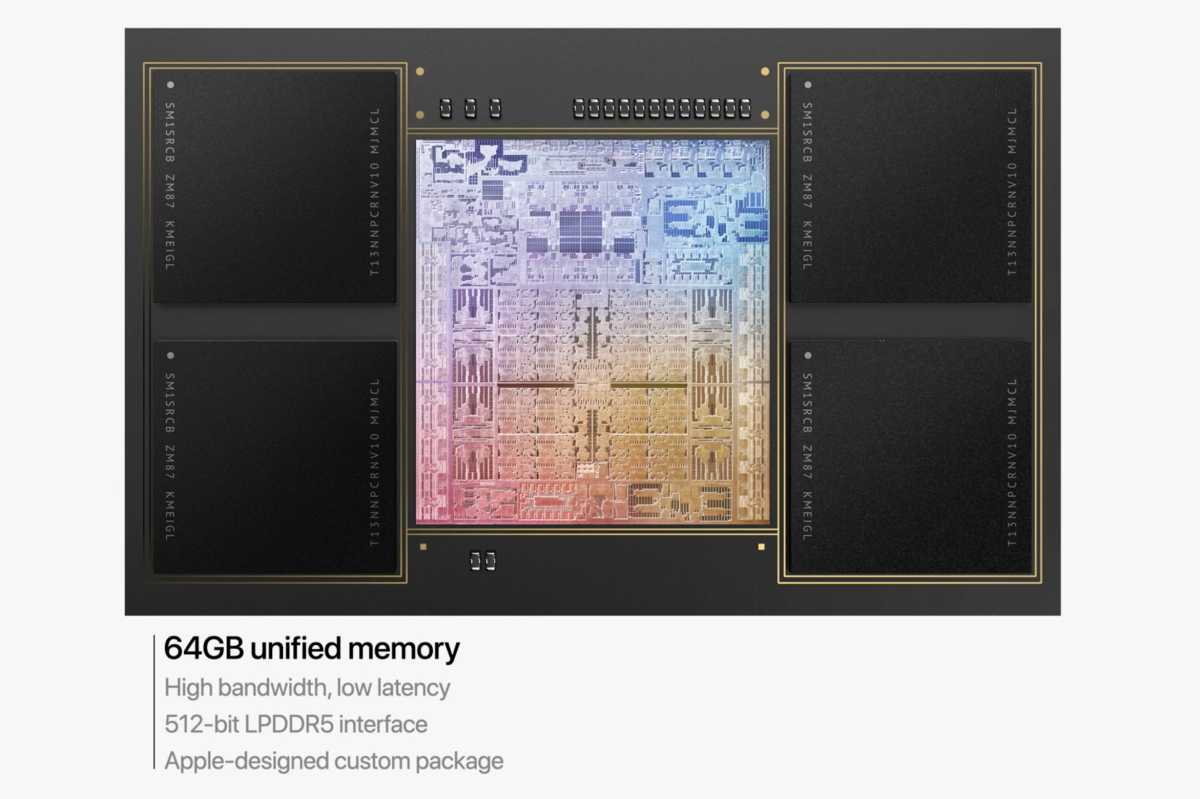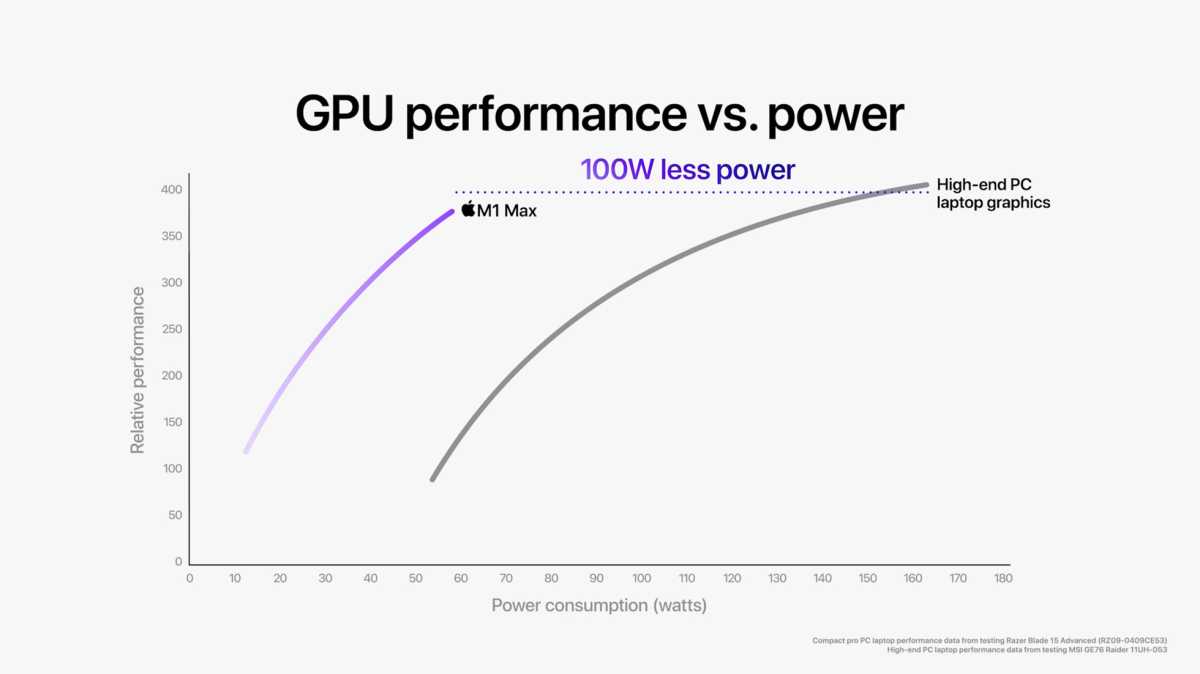M1 Pro and M1 Max: Apple’s about to embarrass Intel all over again
[ad_1]
In a recent Axios interview, Intel CEO Pat Gelsinger said he wants to win back Apple’s business by making better products. “Apple decided they could do a better chip themselves than we could,” he said, following it with the understatement of the year: “And, you know, they did a pretty good job.”
Apple’s M1 processor delivered performance that was on par with the most powerful Intel laptop chips while using a tiny fraction of the power. When I reviewed the M1 MacBook Air I came to the same conclusion that most other reviewers did: Apple silicon is legit. It’s just shocking how much better it is than a comparable Intel chip. “And this is just the low-end chip,” I said at the time. “Wait until the big chips arrive!”
And now with the M1 Pro and M1 Max, the big chips are here, and Apple’s about to embarrass Intel all over again.
Doubling down with the M1 Pro
The M1 Pro takes everything about the M1 and nearly doubles it all. The high-performance CPU cores are doubled from four to eight (interestingly, the high-efficiency cores have been reduced from four to two). The GPU cores have been doubled from eight to 16. The memory bus width has been doubled from 128-bit to 256-bit, giving it double the memory bandwidth (Apple switched to LPDDR5, too). Instead of 8GB or 16GB options, memory has doubled to 16GB or 32GB.
Apple
Apple says the CPU performance is up to 70 percent better than the M1, and the GPU is up to twice as fast. Sure, these are all Apple’s performance numbers, so take them with a grain of salt until we can verify them ourselves. But in our experience, Apple rarely exaggerates its claims in this area. Apple’s performance comparisons may be frustratingly vague, but they’re no bull.
If our experience with Apple’s performance claims in the M1 is anything to go by, and more recently the A15 processor in the iPhone 13 Pro, Apple’s performance characterizations are going to be generally on point. We think you’re going to see this performance in the real world.
Intel’s Alder Lake processors are on the way, and they should be a big improvement from the Tiger Lake architecture that the M1 already stomped all over. But is it more than 70 percent better? Is the integrated GPU more than twice as good? I’m sure Alder Lake desktop CPUs will be impressive, but Intel’s not going to come anywhere close to this performance in the roughly 35-45W laptop class.

Apple
The M1 Pro is a massive 33.7 billion transistors. That’s bigger than a GeForce RTX 3090 desktop GPU.
Doubling down again with the M1 Max
Oh, is doubling up the M1 not enough for you? How about we double it up again? The M1 Max is a total kick in the teeth. It has the same CPU as the M1 Pro, but doubles the GPU up again to 32 cores, doubles the memory to 32/64GB, and doubles the memory bus and bandwidth, up to an astonishing 400GB/sec. Even the media engine is twice as fast as that in the M1 Pro.
Let that sink in. A CPU that could easily trade blows with an 8-core AMD Zen 2 processor, a 10.4 teraflop GPU, and 400GB/sec of unified memory bandwidth… Apple basically stuffed a Playstation 5 into a 14-inch, 3.5 pound laptop that gets 17 hours of battery life!

Apple
Of course, Apple’s GPUs don’t have ray tracing acceleration hardware (more’s the pity) and it’s not like Macs are exactly on the cutting edge for big game releases. Nobody would suggest you buy a new MacBook Pro if gaming is your primary passion.
But Apple seems to have gone out of its way to do more than just throw more cores in the thing. The new M1 chips match the increases in core count with increases in cache and memory bandwidth to prevent bottlenecks. Even the SSDs are gobsmackingly fast. Apple promises 7.4 GB/sec, which is twice the already crazy-fast SSD in the existing M1 Macs.
No wonder the M1 Max is an eye-boggling 57 trillion transistors. There’s no laptop chip on the market even close to that. Even AMD’s 64-core Epyc “Rome” processor for big server installations comes in under 40 billion transistors.
It’s going to take Intel a while
The earliest leaked Geekbench 5 scores for the M1 Max show a single-threaded score in the 1,700 to 1,800 range and a multi-threaded score of 11,000 to 12,000. That’s about 15 percent higher than the very fastest Intel-based laptops (Geekbench scores for Intel chips are highly dependent on the exact laptop configuration and cooling). Could a laptop with Intel’s new Alder Lake architecture catch up to those scores? Maybe, and we might even see high-end laptops using those chips within the next three-six months.

Apple
But no Alder Lake chip is going to come close to the M1 Pro/Max performance without using a lot more power. And neither Intel nor AMD have an integrated graphics chip on their roadmap with anything remotely close to that in the M1 Max. And Apple’s got a massive advantage in memory bandwidth.
It’s about more than just CPU and GPU performance, of course. Apple’s got an extremely faster 16-core Neural Engine, and a terribly impressive media processor that does HEVC encoding and decoding at a blazing rate, and even adds ProRes encoding and decoding this year. All of Apple’s standard frameworks take advantage of all these “un-core” parts of the System-on-Chip, making it relatively easy for developers to make software just fly.
The real question is how long Apple can keep this up? Anandtech has a very detailed and fascinating deep dive into the A15 SoC, finding it to be even faster and more energy efficient. Those micro-architectural changes will surely find their way to the M2, M2 Pro, and M2 Max over the next year or so.
You can bet we’ll see another 15-20 percent improvement in performance next year, which neither Intel nor AMD will not be able to even approach in the same power envelope. The next architecture will use a more advanced manufacturing process, and the march will continue. But can Apple keep delivering those performance gains every year? At some point, it has to taper off, right?
Apple has certainly defied expectations with its iPhone and iPad processors over the years. We’ve heard that the next Qualcomm chip will beat Apple’s best more times than I can count, and Apple manages to stay two steps ahead. It’s probably foolish for Mr. Gelsinger to think that Intel, or anyone else, will deliver a superior product in the next two or three years, but there’s little doubt that Intel and AMD’s attempts to “beat the M1 Max” (and the M2 Max in a year, and the M3 Max the year after that) will mean better laptops for those buying Windows PCs.
As for whether Intel stands a chance at earning back Apple’s business? Not a chance, Mr. Gelsinger. And running a silly ad campaign directly targeting Apple sure won’t help.
I have written professionally about technology for my entire adult professional life – over 20 years. I like to figure out how complicated technology works and explain it in a way anyone can understand.
[ad_2]
Source link






